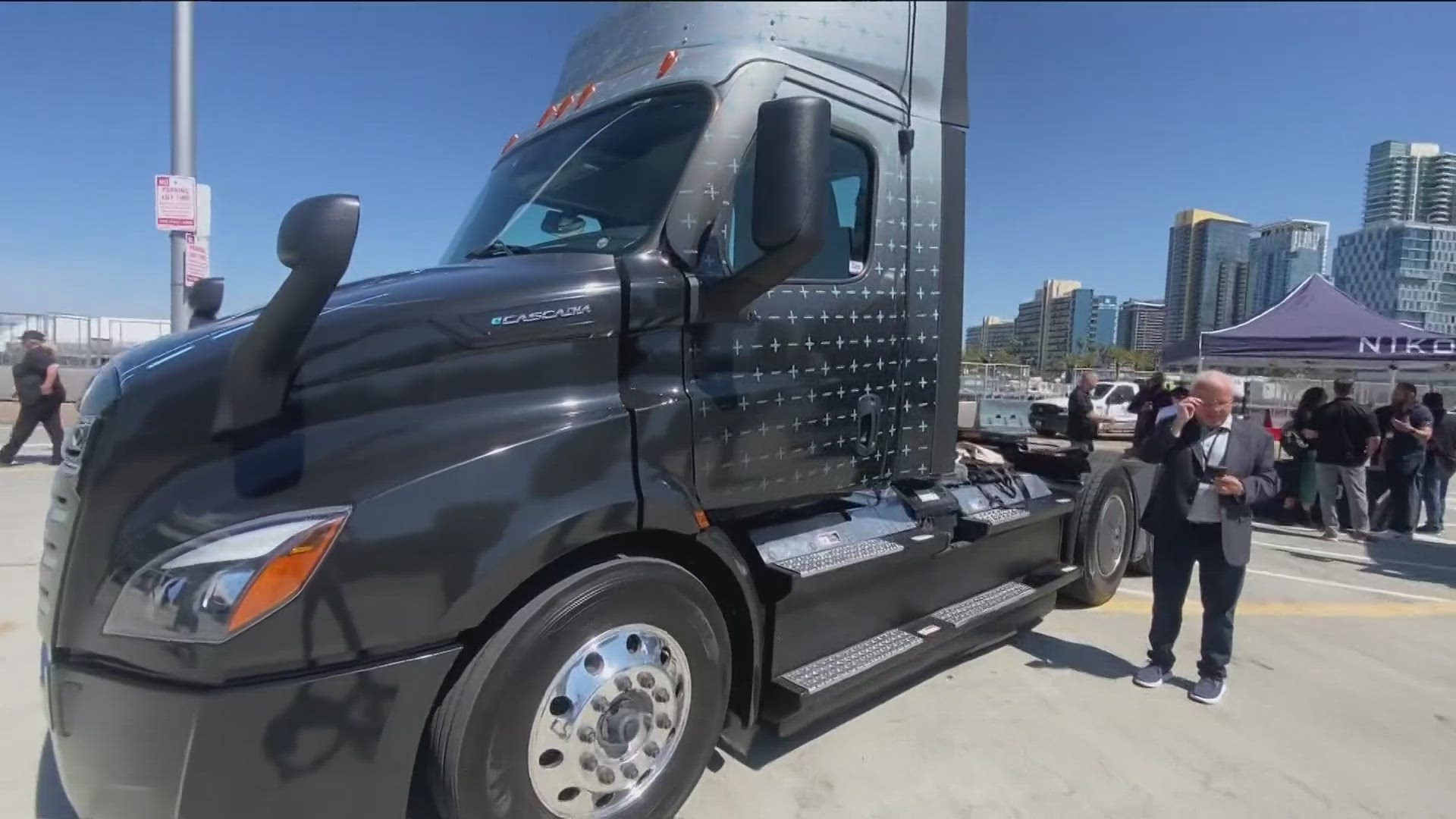SAN DIEGO — On the eve of a new zero-emissions truck and bus requirement being adopted, San Diego Gas & Electric hosted its second annual EV Fleet Day on the Broadway Pier to help local fleet operators make the switch to medium and heavy-duty zero-emission vehicles, such as new electric-powered garbage trucks, school and public transit buses, delivery trucks, and cargo vans.
Top transportation leaders held educational panel discussions with local leaders and leading EV companies, followed by a showcase of dozens of EV demos.
“It’s a great opportunity for us to bring together all the fleet providers in our region and educate them on what it’s going to take to electrify fleets, which is obviously an important goal we have in the state of California,” said Miguel Romero, Vice President of Energy Innovation for SDG&E.
The California Air Resources Board’s (CARB) Advanced Clean Fleets regulation will be considered for approval on April 28. If approved, this regulation will mean a quick transition to zero-emission fleets in California.
What are the different regulatory components of the proposed Advanced Clean Fleet (ACF) regulations?
- Manufacturer sales mandate. Manufacturers may sell only zero-emission medium- and heavy-duty vehicles starting in 2040.
- State and local agencies. State and local government fleets, including city, county, district, and State agency fleets, would be required to ensure 50 percent of vehicle purchases are zero-emission beginning in 2024 and 100 percent of vehicle purchases are zero-emission by 2027.
- Drayage fleets. For drayage fleets, starting 2024, only zero-emission trucks may be added to drayage service, and legacy vehicles must be removed from drayage service at the end of their useful life. By 2035, all drayage trucks must be zero-emission.
- High priority and federal fleets. High priority and federal fleets must comply with a Model Year Schedule or may elect to use the optional ZEVMilestone Schedule to phase-in ZEVs into their fleets:
- Model Year Schedule: Fleets must purchase only ZEVs beginning 2024 and must remove internal combustion engine vehicles at the end of their useful life as defined in Senate Bill 1 (Beall, Statutes 2017, Chapter 5).
- ZEVMilestone Schedule (Optional): Instead of the Model Year Schedule, fleets may elect to meet ZEV targets as a percentage of the total fleet starting with vehicle types that are most suitable for electrification.
WATCH RELATED: San Diego vehicle fleets making big switch to electric (2022).

